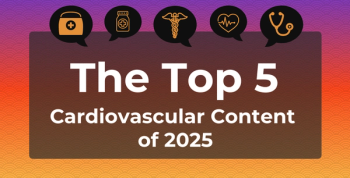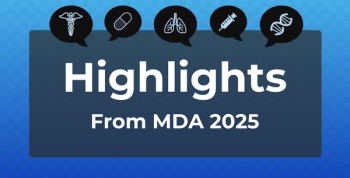
FDA Issues CRL for Vatiquinone in Friedreich Ataxia, Requests More Efficacy Data
Key Takeaways
- The FDA requires more evidence of efficacy for vatiquinone, a 15-lipoxygenase inhibitor, before approval for Friedreich ataxia treatment.
- Vatiquinone showed improvement in bulbar and upright stability subscales but did not meet the primary endpoint in the phase 3 MOVE-FA trial.
Today, the FDA issued a complete response letter (CRL) for vatiquinone (PTC Therapeutics), delaying its potential approval as a treatment for Friedreich ataxia amid efficacy concerns.
Today, the
Vatiquinone is a first-in-class small molecule that selectively inhibits 15-lipoxygenase (15-LO), an enzyme involved in the energetic and oxidative stress pathways disrupted in patients with FA. By inhibiting 15-LO, the therapy helps alleviate mitochondrial dysfunction, promote neuronal survival, and reduce oxidative stress and inflammation.
In its CRL, the FDA stated that the data submitted in support of the NDA did not demonstrate substantial evidence of efficacy. Because of this, the agency is requiring an additional adequate and well-controlled study before resubmission. If approved, vatiquinone would
“We are of course disappointed by the FDA’s decision to not approve vatiquinone,” Matthew B. Klein, MD, CEO of PTC Therapeutics, said in a statement.1 “We believe the data collected to date demonstrate that vatiquinone could provide a safe and effective therapy for both children and adults living with Friedreich ataxia. We plan to meet with the FDA to discuss potential steps to address the issues raised in the CRL.”
NDA Supporting Data Fall Short
The NDA was primarily supported by results from the phase 3 MOVE-FA trial (
However, vatiquinone showed significant improvement in the bulbar and upright stability subscales, which reflect key drivers of morbidity and predict loss of ambulation.
“While we are disappointed that the study did not achieve its primary end point, we are encouraged by the findings of meaningful impact on several different aspects of FA disease progression and morbidity over 72 weeks,” Klein said in a statement.
Additional evidence supporting the NDA
Also, in an open-label study of adults, vatiquinone treatment was associated with a 4.8-point mFARS benefit at 24 weeks compared with natural history populations (P < .0001; n = 41). Across trials, vatiquinone maintained a well-tolerated safety profile, with no serious treatment-related adverse events reported.
“The results of the extension studies provide further evidence of the potential benefit of vatiquinone in slowing disease progression,” Klein said in a news release. “In addition, the strong safety profile of vatiquinone positions it to be a potentially meaningful therapy for all Friedreich ataxia patients, particularly children and adolescents for whom there are no approved therapies.”
References
- PTC Therapeutics receives complete response letter for vatiquinone NDA. News release. PTC Therapeutics. August 19, 2025. Accessed August 19, 2025.
https://ir.ptcbio.com/news-releases/news-release-details/ptc-therapeutics-receives-complete-response-letter-vatiquinone - Meglio M. FDA denies approval for Friedreich ataxia agent vatiquinone, citing more efficacy needed. NeurologyLive®. August 19, 2025. Accessed August 19, 2025.
https://www.neurologylive.com/view/fda-denies-approval-friedreich-ataxia-agent-vatiquinone-citing-more-efficacy-needed - A study to assess the efficacy and safety of vatiquinone for the treatment of participants with Friedreich ataxia (MOVE-FA). ClinicalTrials.gov. Updated March 27, 2024. Accessed August 19, 2025.
https://clinicaltrials.gov/study/NCT04577352 - PTC Therapeutics announces topline results from vatiquinone MOVE-FA registration-directed trial. News release. PTC Therapeutics. May 23, 2023. Accessed August 19, 2025.
https://ir.ptcbio.com/news-releases/news-release-details/ptc-therapeutics-announces-topline-results-vatiquinone-move-fa - PTC Therapeutics announces positive results from long-term treatment studies and updates on regulatory progress for vatiquinone Friedreich ataxia program. News release. PR Newswire. October 8, 2024. Accessed August 19, 2025.
https://www.prnewswire.com/news-releases/ptc-therapeutics-announces-positive-results-from-long-term-treatment-studies-and-updates-on-regulatory-progress-for-vatiquinone-friedreich-ataxia-program-302269891.html
Newsletter
Stay ahead of policy, cost, and value—subscribe to AJMC for expert insights at the intersection of clinical care and health economics.








